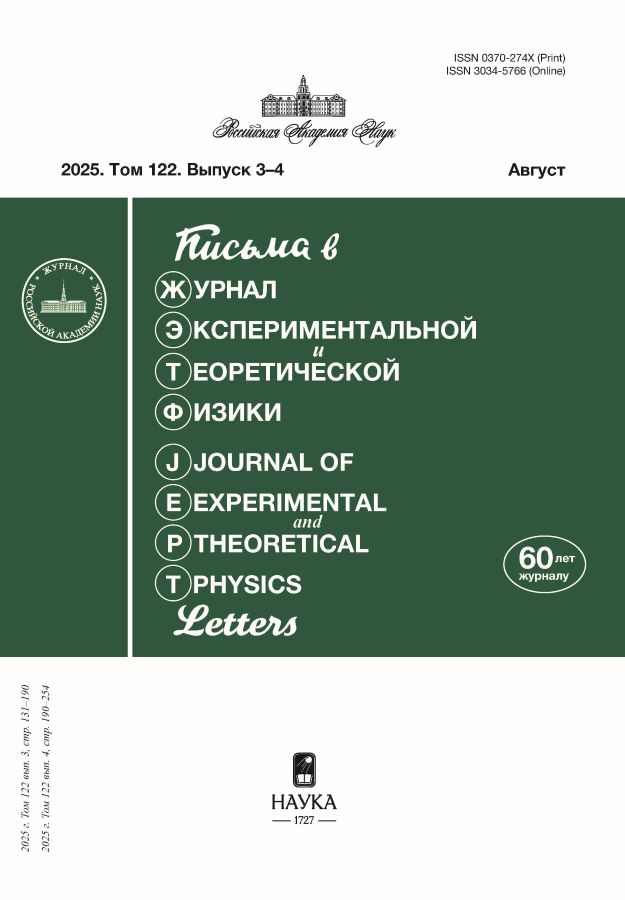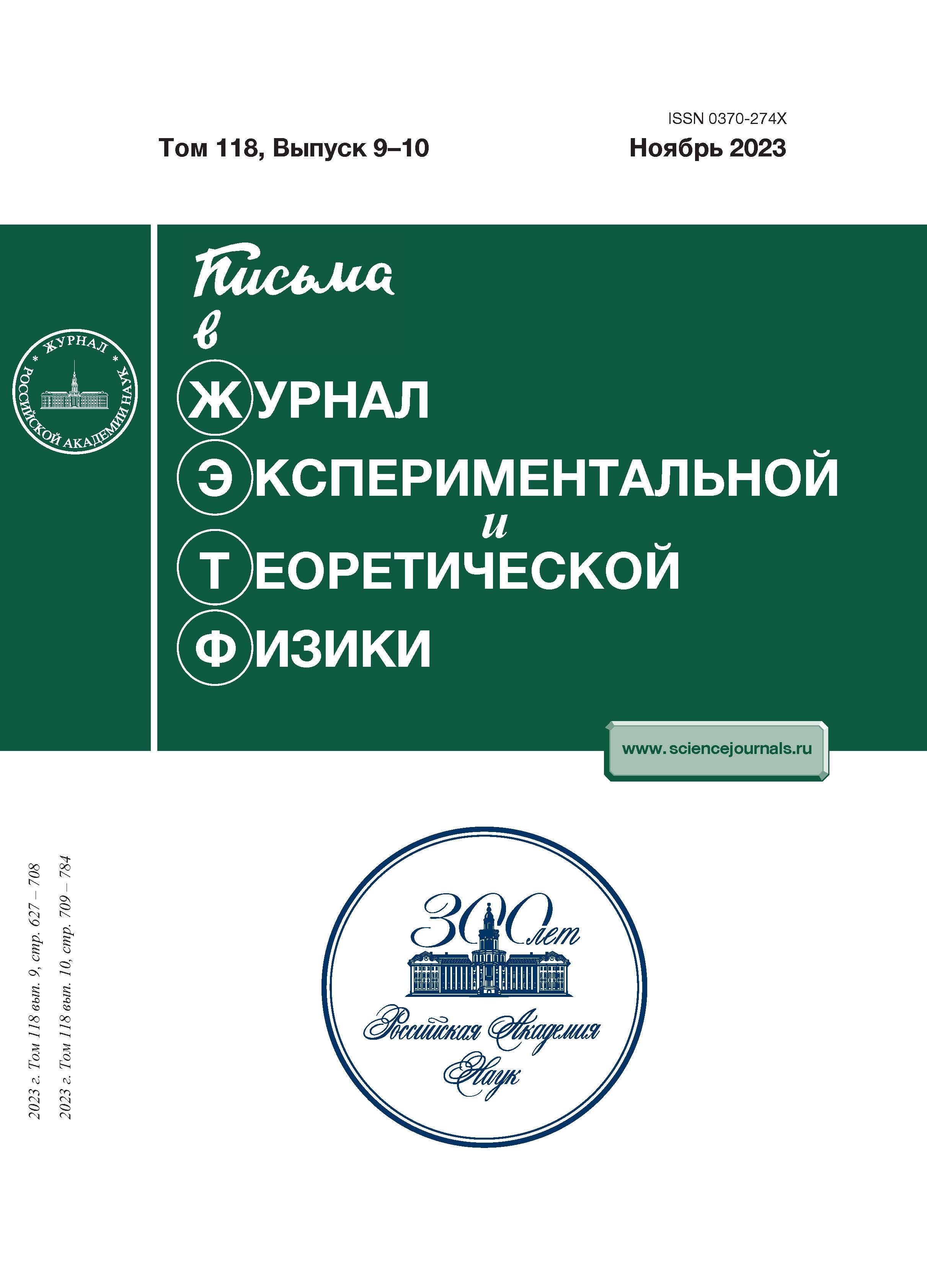Ab Initio Study of the Adsorption of Li and Na on the Surface of a MgCl2 Monolayer
- Authors: Ustyuzhanina S.V.1, Kistanov A.A.1,2
-
Affiliations:
- Institute of Metals Superplasticity Problems, Russian Academy of Science
- Laboratory of Metals and Alloys Under Extreme Impacts, Ufa University of Science and Technology
- Issue: Vol 118, No 9-10 (11) (2023)
- Pages: 683-688
- Section: Articles
- URL: https://vestnik.nvsu.ru/0370-274X/article/view/664227
- DOI: https://doi.org/10.31857/S1234567823210097
- EDN: https://elibrary.ru/PTDEBA
- ID: 664227
Cite item
Abstract
Ab initio calculations have been performed to study the dynamic stability of a new MgCl2 monolayer and the formation of point defects in it. The possibility of using the MgCl2 monolayer in Li- and Na-ion batteries has been analyzed. It has been shown that the MgCl2 monolayer has the dynamic stability but can contain point defects. These point defects can improve the adsorption capability of the MgCl2 monolayer with respect to Li and Na atoms. The results obtained in this work indicate that the MgCl2 monolayer is a promising material for application in Li- and Na-ion batteries.
About the authors
S. V. Ustyuzhanina
Institute of Metals Superplasticity Problems, Russian Academy of Science
Email: andrei.kistanov.ufa@gmail.com
450001, Ufa, Russia
A. A. Kistanov
Institute of Metals Superplasticity Problems, Russian Academy of Science; Laboratory of Metals and Alloys Under Extreme Impacts, Ufa University of Science and Technology
Author for correspondence.
Email: andrei.kistanov.ufa@gmail.com
450076, Ufa, Russia; 450001, Ufa, Russia
References
- A. A. Kistanov, S. A. Shcherbinin, R. Botella, A. Davletshin, and W. Cao, J. Phys. Chem. Lett. 13, 2165 (2022); https://doi.org/10.1021/acs.jpclett.2c00367.
- I. T. Lima, R. Vasconcelos, R. Gargano, and E. N. C. Paurad, New J. Chem. 44, 8833 (2020); https://doi.org/10.1039/D0NJ01264E.
- G. Bhattacharyya, I. Choudhuri, P. Bhauriyal, P. Garg, and B. Pathak, Nanoscale 10, 22280 (2018); https://doi.org/10.1039/C8NR07429A.
- F. Lu, W. Wang, X. Luo, X. Xie, Y. Cheng, H. Dong, H. Liu, and W.-H. Wang, Appl. Phys. Lett. 108, 132104 (2016); https://doi.org/10.1063/1.4945366.
- W. Mrozik, M. A. Rajaeifar, O. Heidrich, and P. Christensen, Energy Environ. Sci. 14, 6099 (2021); https://doi.org/10.1039/D1EE00691F.
- A. A. Kistanov, D. R. Kripalani, Y. Cai, S. V. Dmitriev, K. Zhou, and Y.-W. Zhang, J. Mater. Chem. A 7, 2901 (2019); https://doi.org/10.1039/C8TA11503F.
- I. Kochetkov, T. T. Zuo, R.Ruess, B. Singh, L. Zhou, K. Kaup, J. Janek, and L. Nazar, Energy Environ. Sci. 15, 3933 (2022); https://doi.org/10.1039/D2EE00803C.
- K. Giagloglou, J. L. Payne, Ch. Crouch, R. K. B. Gover, P. A. Connor, and J. T. S. Irvinl, J. Electrochem. Soc. 165, A3510 (2018); https://doi.org/10.4191/kcers.2019.56.3.05.
- Y. Li, L. Shi, X. Gao, J. Wang, Y. Hu, X. Wu, and Z. Wen, Chem. Eng. J. 421, 127853 (2021); https://doi.org/10.1016/j.cej.2020.127853.
- T. Li, Z. X. Chen, Y. L. Cao, X. P. Ai, and H. X. Yang, Electrochim. Acta 68, 202 (2012); https://doi.org/10.1016/j.electacta.2012.02.061.
- J. Zhou, L. Shen, M. D. Costa, K. A. Persson, S. P. Ong, P. Huck, Y. Lu, X. Ma, Y. Chen, H. Tang, and Y. P. Feng, Sci. Data 6, 86 (2019); https://doi.org/10.1038/s41597-019-0097-3.
- D. H. Fairbrother, J. G. Roberts, and G. A. Somorjai, Surf. Sci. 399(1), 109 (1998); https://doi.org/10.1016/S0039-6028(97)00816-9.
- G. Kresse, and J. Furthmuller, Phys. Rev. B 54, 11169 (1996); https://doi.org/10.1103/PhysRevB.54.11169.
- J. P. Perdew, K. Burke, and M. Ernzerhof, Phys. Rev. Lett. 77, 3865 (1996). https://doi.org/10.1103/PhysRevLett.77.3865.
- A. Togo, L. Chaput, T. Tadano, and I. Tanaka, J. Phys. Condens. Matter 35, 353001 (2023); https://dx.doi.org/10.1088/1361-648X/acd831.
- S. Grimme, J. Antony, S. Ehrlich, and H. Krieg, J. Chem. Phys. 132, 154104 (2010); https://doi.org/10.1063/1.3382344.
- V. L. Deringer, A. L. Tchougree, and R. Dronskowski, J. Phys. Chem. A 115(21), 5461 (2011); https://doi.org/10.1021/jp202489.
- R. Nelson, C. Ertural, J. George, V. L. Deringer, G. Hautier, and R. Dronskowski, J.Comput Chem. 41(21), 1931 (2020); https://doi.org/10.1002/jcc.26353.
- G. Bhattacharyya, I. Choudhuri, P. Bhauriyal, P. Garg and B. Pathak, Nanoscale 10, 22280 (2018); https://doi.org/10.1039/c8nr07429a.
- J. Zhu and U. Schwingenschlogl, ACS Appl. Mater.Interfaces 6, 11675 (2014); https://doi.org/10.1021/am502469m.
- H. R. Mahida, A. Patel, D. Singh, Y. Sonvane, P. B. Thakor, and R. Ahuja, Superlattices Microstruct. 162, 107132 (2022); https://doi.org/10.1016/j.spmi.2021.107132
- H.-P. Komsa and A. V. Krasheninnikov, Physics and theory of defects in 2D materials: the role of reduced dimensionality, Amsterdam (2022), p. 7; https://doi.org/10.1016/B978-0-12-820292-0.00008-2.
- S. Abdolhosseinzadeh, Ch. Zhang, R. Schneider, M. Shakoorioskooie, F. Nu¨esch, and J. Heier, Adv. Mater. 34, 2103660 (2022); https://doi.org/10.1002/adma.202103660.
- A. A. Kistanov, V. R. Nikitenko, and O. V. Prezhdo, J. Phys. Chem. Lett. 12, 620 (2021); https://doi.org/10.1021/acs.jpclett.0c03608.
- A. V. Krasheninnikov, P. O. Lehtinen, A. S. Foster, and R. M. Nieminen, Chem. Phys. Lett. 418, 132 (2006); https://doi.org/10.1016/j.cplett.2005.10.106.
- X. Yu, H. Shao, X. Wang, Y. Zhu, D. Fang, and J. Hong, J. Mater. Chem. A 8, 3128 (2020); https://doi.org/10.1039/C9TA12600G.
- Л. С. Чумакова, А. В. Бакулин, С. Е. Кулькова, ЖЭТФ 161(6), 874 (2022); https://doi.org/10.31857/S0044451022060116.
- А. В. Бакулин, С. Е. Кулькова, ЖЭТФ 6(12), 1136 (2018); https://doi.org/10.1134/S004445101812009X.
- А. С. Харламенков, Пожаровзрывобезопасность/Fire and Explosion Safety. 31(3), 96 (2022).
- R. F. W. Bader, Atoms in Molecules. A Quantum Theory, Clarendon Press, Oxford, UK (1990).
- W. Tang, E. Sanville, and G. Henkelman, J. Phys.: Condens. Matter. 21, 084204 (2009); https://doi.org/10.1088/0953-8984/21/8/084204.
Supplementary files











